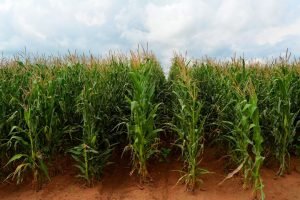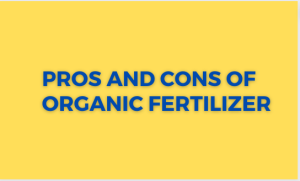Ryegrass is a fast-growing grass that offers great versatility in that it can be used as a lawn grass livestock forage to over-seed lawns in the winter or for erosion management. It’s highly important to keep your lawn in top-notch condition. There are varieties of Ryegrass which include: wild Ryegrass, cereal ryegrass, annual Ryegrass, perennial Ryegrass, marshal ryegrass, among others.
Pros of Ryegrass
1. It withstands light shade: this feature enables Ryegrass to be used for both temporary and permanent lawns. Thus, it’s a two in one effect, since regardless of your intention to use it, you can still use it in two ways, both in the temporary context and permanent context.
2. It grows very fast: Unlike other types of grasses, Ryegrass germinates and establishes itself rather quickly. With this fast type of growth, you will have your lawn in its top-notch condition without having to wait for long or to incur fertilizer costs.
3. It boasts a very high tolerance level: In areas of high traffic, the perfect Choice of grass you’ll require to use will be Ryegrass due to its high tolerance level.
4. It is a natural pre-emergent: This is among the best feature of Ryegrass, this is because it enables the growth of other plants through the release of allelochemicals, thus making it allelopathic.
5. It is an excellent erosion control crop: Ryegrass comes in handy when controlling erosion; they really do a good job in ensuring soil erosion does not occur.
6. It helps to mine minerals from deep in the soil profile: Ryegrass is a deep-rooted cover crop that is very helpful; thus, it helps mine minerals from deep in the soil.
7. It’s excellent with manure applications: Ryegrass does well with manure applications; it cooperates, so we’ll give the best results.
8. It is a luxury consumer of Nitrogen and a tremendous scavenger of Nitrogen: This is so essential as Nitrogen is needed for growth.
9. It makes an excellent forage crop: Forage crops are those crops that provide food for grazing animals, or that can be harvested for feeding; they provide the bedrock to sustainable agriculture. Thus, Ryegrass can provide excellent forage crops to animals.
10. It works so well as aerial when applied to corn and soybeans: When used, it produces amazing results, in the end, a product of corn and soybeans.
11. It is drought resistant: Ryegrass can survive even in the drought regions since it has deep roots that hold and Nitrogen in the soil from previous fertilizer applications, impressive right?
12. Soil improvement: Ryegrass increases the fertility of the soil, in addition to the biomass that will increase the soil organic matter and fertility after the cover crop is burned down.
13. Weed suppression tool: Ryegrass controls weeds in the area as the vigorous seedling will quickly form cover to compete with weeds.
14. It increases water infiltration: The fact that Ryegrass has deep roots is essential as it opens pathways for increased water infiltration.
15. Nitrogen recovery: When you use manure in the presence of Ryegrass, the plant will be able to keep Nitrogen in the soil profile and make it available for the crop the following year.
Cons of Ryegrass
1. It is not overseeded: Thus, in most cases, Ryegrass will grow in clumps.
2. It requires extensive care: Maintaining Ryegrass will require you to take good care of it; compared to other types of grass, which will only require little maintenance, Ryegrass requires quality care.
3. A dull mower can shred the tough grass: If you use a dull mower, then definitely it will shred the tough grass, leaving you with a fuzzy lawn.
4. Old plants will give you the worst results: When you use old Ryegrass, it will have poor cold tolerance and can die easily. Thus, it’s essential for one to use new plants that will offer a much higher tolerance rate
5. It is highly competitive and can compete with crops: Ryegrass is highly competitive. Thus it can compete with other crops from as early as the two–leaf crop stage.
6. Cost: Most lawns require frequent renovation. Thus you are required to incur the cost of the Ryegrass during renovation.
7. Installation fee: The owner will be required to pay the installation cost.
8. It has environmental impacts: Unlike natural grass, which cools the environment, artificial grass does not; it does not filter air or water pollutants like natural turf.
9. It heats up in direct sunlight: When Ryegrass is exposed to the sun for the majority of days, the grass will begin to heat up; though some companies have incorporated some cooling technology into the manufacturing process, it increases the cost.
10. Odor buildup: The best way to keep your lawn looking good and smelling well it’s by rinsing the turf after pets use them, that is if you have pets around.
11. Infill replenishing: This is the method used to keep the lawn in shape and maintain its natural look and feel; it also needs to be replaced a few times. This will end up being costly.
12. They may cause rug burn: Since Ryegrass is rough than live grass, it thus may lead to effects like that of causing rug burn to the individuals.
13. The installation process kills off any soil life underneath the turf: The infill process might make it nearly impossible to switch back to living grass or other plants later if the owner decides to plant other plants in the future.
14. Turf degrades over time: Larger quantities of chemicals are released when worn-out synthetic turf is replaced. Thus, the old pieces will likely end up in landfills, leading to toxic water runoff, thus threatening our health via contact like water consumption
15. Surface heat: Ryegrass does get hot, unlike normal grass; thus, if you touch it, you’ll realize that it feels so warm, at times, it might even lead to surface temperature, making the place have an increased surface temperature.


